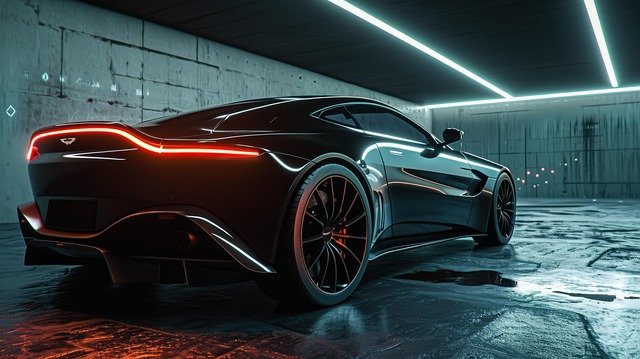Fashion, design, and digital art are constantly evolving, yet some trends have the remarkable power to return stronger than ever. One of the most fascinating movements today is the Retro-Futurism and Y2K Revival, where the aesthetics of the past collide with futuristic visions. From digital art to fashion, music, and pop culture, this revival invites creators and enthusiasts to embrace nostalgia while imagining the future.
Whether you’re a designer, artist, or trend enthusiast, exploring these styles can spark creativity, inspire innovative projects, and connect you with a vibrant, forward-thinking community.
Understanding Retro-Futurism and Y2K Revival
Retro-Futurism is an artistic movement that imagines the future from the perspective of the past. Think flying cars, chrome surfaces, neon lights, and bold geometric designs inspired by the 1950s–1980s. It’s the fusion of imagination, technology, and optimism — a glimpse at how previous generations dreamed of tomorrow.
Meanwhile, the Y2K Neo Revival brings back the late 1990s and early 2000s aesthetics, with its metallic hues, glossy textures, digital motifs, and playful tech-inspired fashion. It celebrates bold self-expression, fun experimentation, and a lighthearted, digital-first lifestyle.
By combining these two movements, creators and enthusiasts can explore a world where nostalgia meets futuristic innovation — giving life to truly unique digital art, fashion, and lifestyle experiences.
Key Elements to Embrace
To fully explore Retro-Futurism and Y2K Revival, focus on the following elements:
- Colour Palettes: Neon pinks, electric blues, metallic silvers, and holographic gradients evoke nostalgia while hinting at futuristic optimism.
- Design Motifs: Pixelated patterns, chrome textures, circular shapes, and digital interfaces are essential in digital art and design projects.
- Fashion & Accessories: Think shiny fabrics, tech-inspired jewellery, mini backpacks, and chunky sneakers — all staples of the Y2K revival.
- Music & Pop Culture: Incorporate retro synths, electronic beats, and iconic early 2000s pop references to complete the aesthetic.
By blending these elements, you can create a cohesive style that captures the essence of both movements while staying fresh and contemporary.
Practical Tips for Digital Artists
If you’re exploring these trends in digital art, here’s how to make your work stand out:
- Experiment with Layering: Combine retro textures with futuristic shapes to create depth.
- Use AI Tools for Inspiration: Platforms like MidJourney or DALL·E can generate retro-futuristic or Y2K-inspired visuals.
- Iterate and Refine: Don’t settle on the first concept — blend multiple AI outputs and human tweaks for the best results.
- Incorporate Emotional Storytelling: Even tech-heavy designs should convey nostalgia, fun, or optimism to resonate with viewers.
Fashion and Lifestyle Integration Y2K Revival
Retro-Futurism and Y2K Neo Revival aren’t limited to digital art. They are expressed in fashion, home decor, and everyday lifestyle choices. For instance:
- Metallic jackets, holographic bags, and neon sneakers can elevate any outfit.
- Retro-futuristic wallpapers, furniture, and gadgets add playful yet modern touches to living spaces.
- Music playlists combining synthwave, early 2000s pop, and electronic beats enhance the overall vibe.
The key is to balance nostalgia with contemporary creativity, ensuring your look or project feels modern while honouring the past.
Challenges and How to Overcome Them Y2K Revival
Exploring these styles comes with challenges. Sometimes blending past and future elements can feel chaotic or overwhelming. To overcome this:
- Plan Your Palette and Style: Stick to a few key colours and motifs to maintain coherence.
- Test Before Committing: Use mood boards or digital mockups to visualise the outcome.
- Embrace Iteration: Experimentation is part of the process — don’t be afraid to tweak repeatedly.
By approaching Retro-Futurism and Y2K Revival thoughtfully, you can create work that is visually stunning, emotionally engaging, and culturally relevant.
The Future of Retro-Futurism and Y2K Revival
As technology continues to advance, these styles will evolve alongside it. Virtual reality, augmented reality, and AI-generated art offer new playgrounds for experimentation. Artists, designers, and enthusiasts who embrace this revival now will be pioneers, bridging the gap between nostalgic aesthetics and futuristic innovation.
FAQs -Y2K Revival
1. What is Retro-Futurism?
Retro-Futurism is an artistic and design movement that imagines the future through the lens of past decades, combining nostalgia with futuristic optimism.
2. What is Y2K Neo Revival?
Y2K Neo Revival revives late 1990s and early 2000s aesthetics, including metallics, glossy textures, digital motifs, and playful fashion styles.
3. How can I use these trends in digital art?
Focus on neon and metallic colour palettes, futuristic-retro motifs, and AI tools for concept generation, then refine with human creativity.
4. Can these styles be applied to fashion and lifestyle?
Yes. From holographic clothing to retro-futuristic decor, these aesthetics can influence everyday life and self-expression.
5. How do I make my creations stand out?
Blend retro and futuristic elements thoughtfully, maintain a consistent colour palette, and add emotional storytelling to resonate with viewers.
